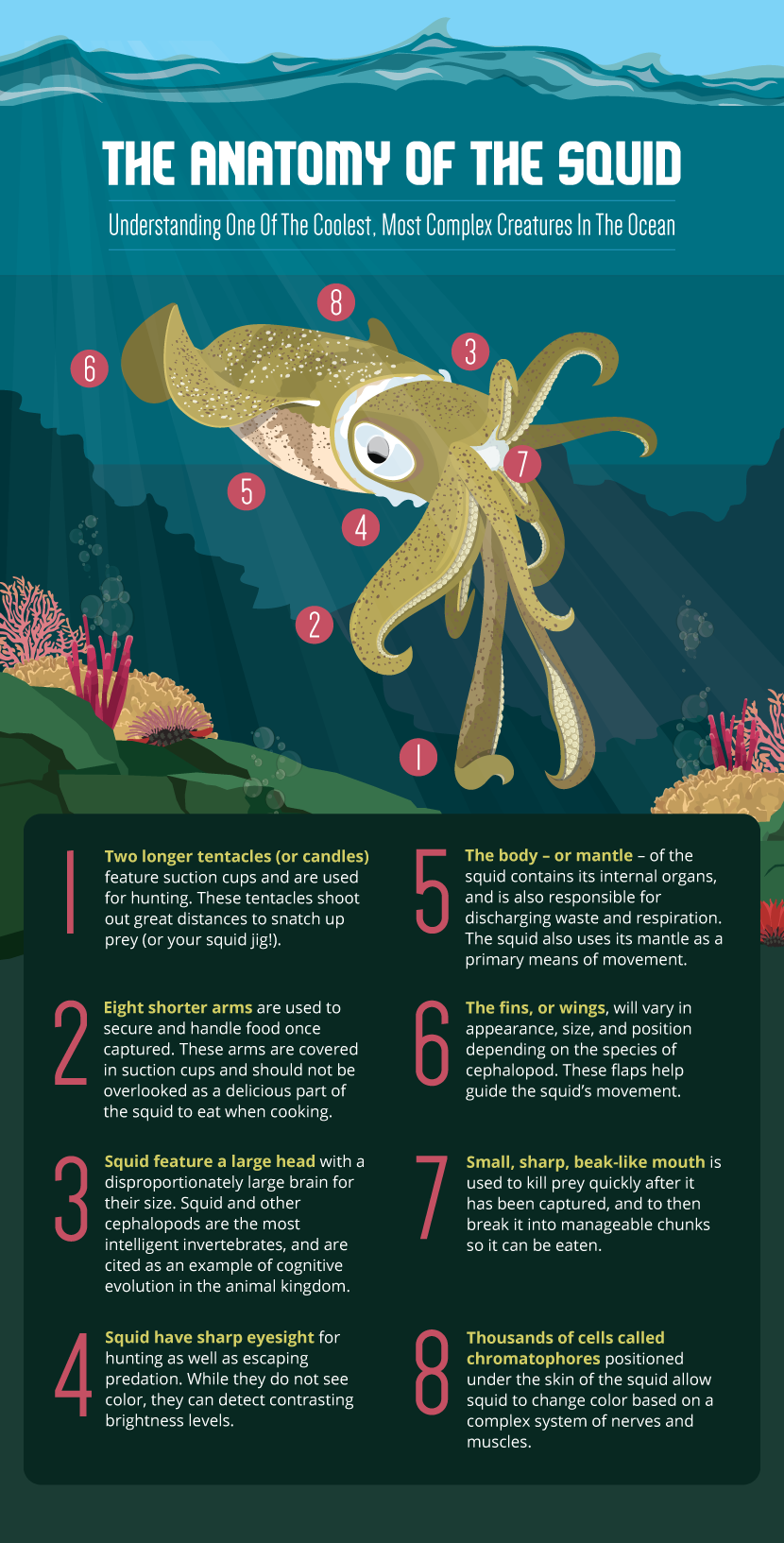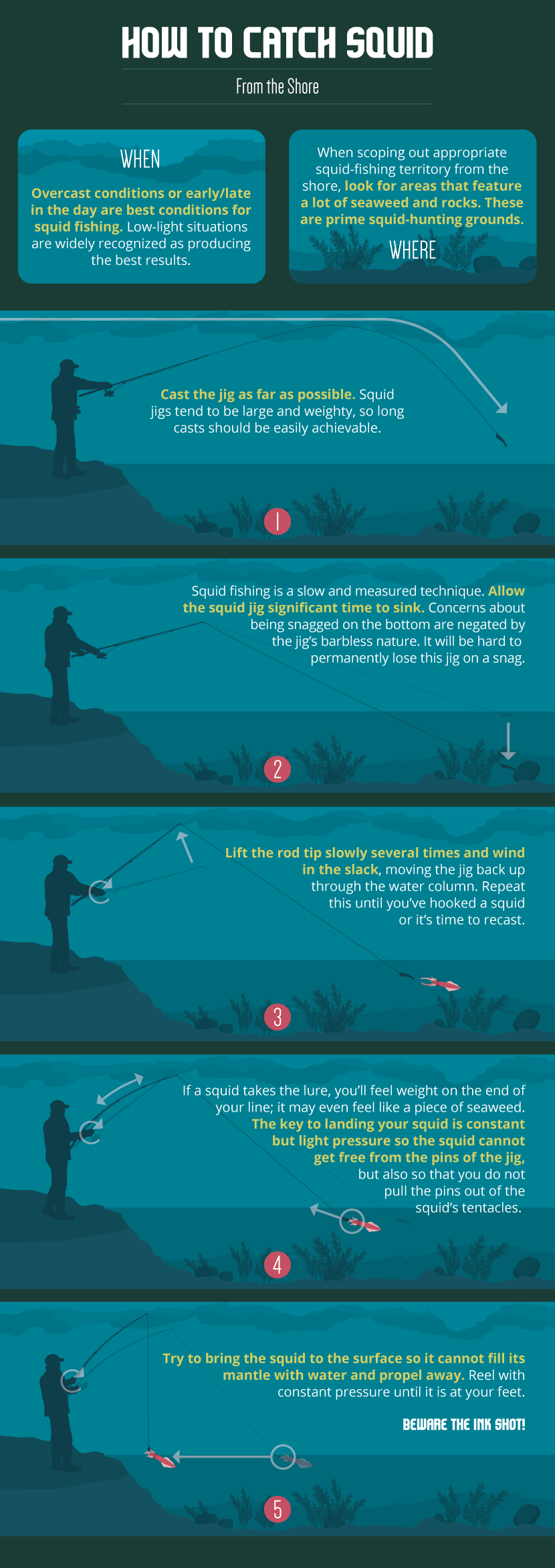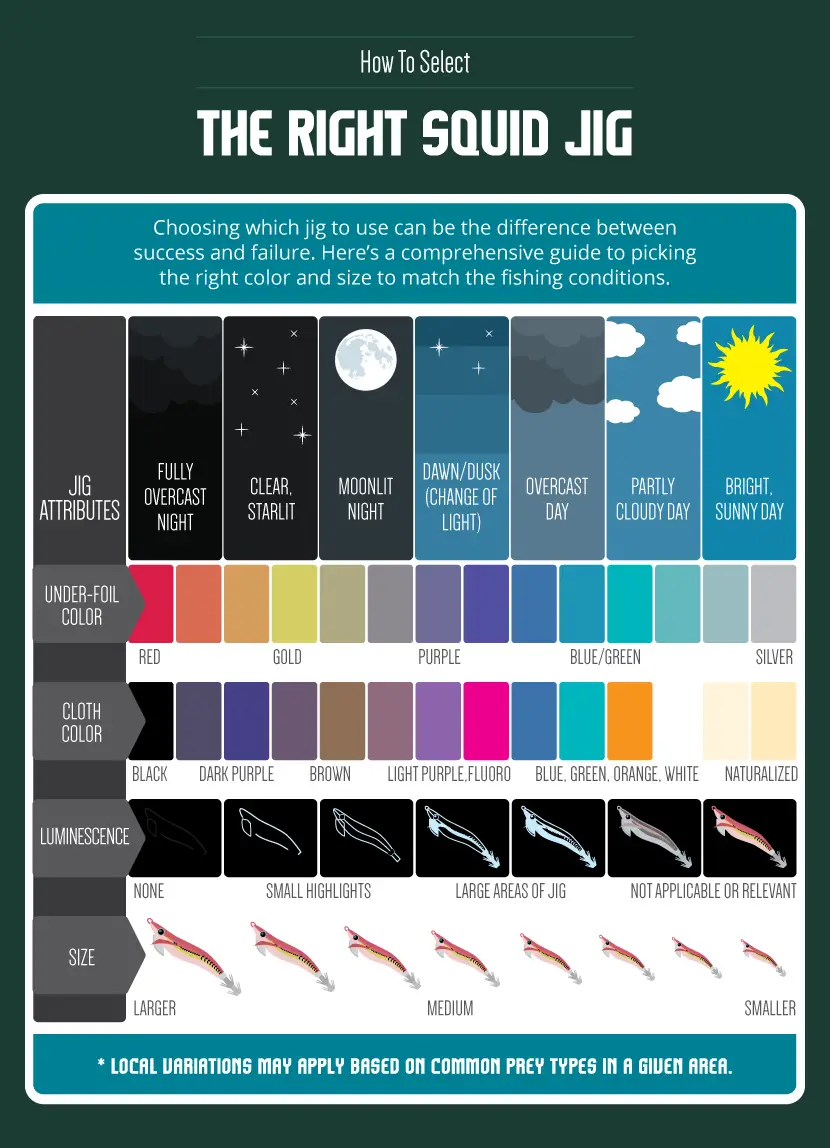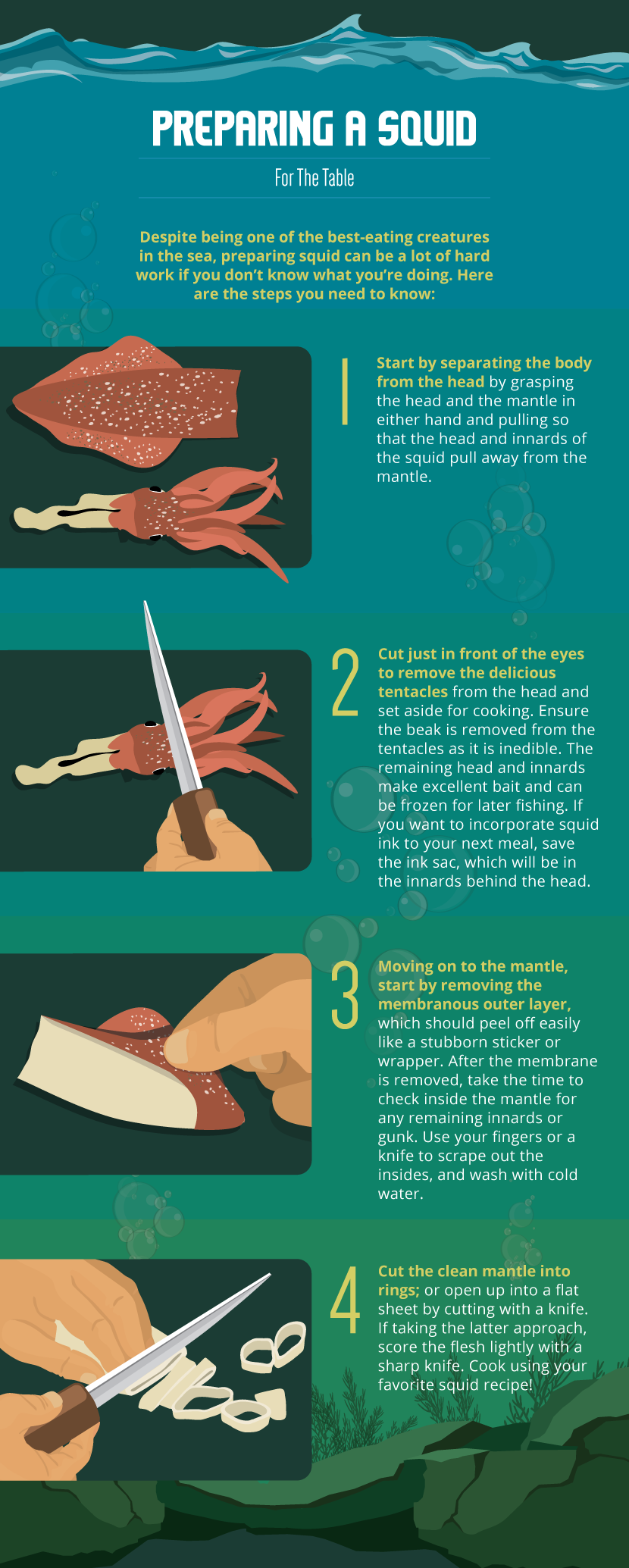Search
Latest Articles
The Squiding Agenda
by Fix.com, December 09, 2019
Why Squid Are Objectively Badass
I have launched into many a vocal rant about my love of squid, usually triggered by some non-fisher-person commenting how “gross” or “disgusting” squid are. Wrong. Squid are awesome. They can change colors to adapt to their surroundings, they fire jets of ink to make quick escapes (or get revenge on foolhardy anglers), they have amazing eyesight and above-average intelligence, and are equal parts cunning predator and elusive prey. If you really look at the “humble” squid and analyze the way it’s designed to perfectly adapt to its surroundings, you’ll have a whole lot more respect for this cephalopod. Not to mention they taste delicious cooked in a range of ways, and make the best bait around (alive or dead) for many large fish species.
Do the Squid Jig
You might point out that fishing for squid isn’t really “fishing” at all. Squid are cephalopods, not fish. Fair point, smartypants. Let’s call it “squidding” henceforth and go from there. The way squid catch their prey is indeed very different from any fish. They use their long, sucker-covered feeder tentacles (sometimes called “candles”) to capture prey, drawing it towards their mouth. The way we approach catching squid, therefore, must also differ from traditional “fishing” methods, and be appropriate for how they feed. That’s why a squid jig looks unlike any lure you’ve ever seen before. Covered at one end with sharp, needle-like protrusions, these jigs aim to attract curious squid, enticing their predatory mechanisms. As a squid grabs a squid jig with its tentacles, it will soon realize it is unable to let the jig go. You’re unlikely to be able to keep a squid connected to any other kind of traditional fishing lure (though it does happen by sheer luck…sometimes).
In terms of squidding tackle, jig selection is the priority. Although custom squid-fishing rods and reels do exist, any rod you use for light-saltwater angling will do just fine for your first foray into squid fishing.
When shopping for squid jigs, you’ll notice a lot of similarities and a few differences. The shopping experience can be overwhelming, as can the research. When selecting the size, color, and luminescent qualities of a squid jig, you’ll hear a lot of different things from a lot of different anglers about which works best under which conditions. We’ve finally put these questions to rest by enlisting the help of Australia’s #1 fishing journalist Steve Starling (and his top-secret squid-fishing analyst), who helped us craft this comprehensive graphic on squid jig selection. It’s important to remember that this chart represents a spectrum of choices; finding the right jig for your given situation is about balancing various attributes of the jig against the conditions you’re facing. Often the colors you have available won’t be perfect, but this information should help you to make a more informed choice for your area and conditions.
Squidding Technique
The fun in catching squid is not in their sporting attributes. Once you have one hooked, the experience of reeling a squid in is like retrieving a lump of kelp with a heartbeat. That doesn’t make hooking and retrieving them easy, though! Let’s start with the terrain. You should be looking for oceanic, tidal areas that contain structure that squid like to live and hunt around; seaweed is the most important of these landmarks. Where there’s kelp, there’s squid: this is the mantra I squid by. Realize, too, that your chances of getting snagged and losing a squid jig to the kelp are drastically reduced due to their barbless nature. You can be a little more daring fishing around weed than you would be with an expensive standard lure with barbed hooks.
Squid jigs tend to be on the larger, heavier end of the lure spectrum, which makes them great for long casts. Pelt that jig as far out as you can, and start by remembering you’re not chasing fast-moving pelagics here. Allow the jig time to sink, and give the rod a few jerks up, lifting it through the water column. Allow it to sink again, and repeat the process until you’ve hooked a squid or the lure is back at your feet. Experiment with faster, jerkier lifts of the jig, and try out some longer or shorter pauses. The retrieve that works on a given day will be the one that suits the temperament of the squid, and so it pays to find out whether they’re feeling aggressive or wary.
Once you’ve hooked a squid, it’s important to slowly and steadily reel it to the surface on its way in. This prevents the squid from filling itself with water and propelling away from you, which is really its only means of escape once hooked. Give it no slack as you reel it to the surface, since any slack line could allow the needles of the jig to fall out. Once the squid is on the surface, it will be unable to fill its body with water to make sudden movements away, and should come quite easily to your hand. But it’s a foolish – and dirty – angler who thinks the squid is all out of tricks. Beware the squid’s ink shot as you land it; they have amazing aim, and won’t hesitate to deal you a blast to the face if you let them. Use your rod tip to change the direction of their aim, and wait until they’ve expended their ink before daring to look them in the face!
What to Do Once You’ve Caught a Squid
Squidding doesn’t tend to be a catch-and-release pastime. This is due in part to the deliciousness of fresh squid, and its awesome effectiveness as a fresh bait. It’s also owing to the fact squid are, as mentioned, not really a sporting species to catch. There are no fast-running, drag-pulling battles to be had; the results are purely delicious! It’s important to remind folks to keep only as many squid as they can use for their immediate needs, and to research and respect size and bag limits, which will vary from region to region. We all want to be able to enjoy catching squid in the future.
One of the barriers to squidding can be the perceived difficulty in preparing a squid for the table after capture. Don’t let this get in your way! Squid are quite easy to clean for a meal with a few basic principles and a little practice. Use the following step-by-step guide to make cleaning a breeze, and remember, fresh squid is always best. If you’re going to freeze your catch, you may as well buy calamari tubes from the supermarket. Fresh squid has a beautiful texture and flavor unlike any calamari you’ve ever eaten, because the squid you’ve eaten was likely frozen.
Eat Up!
How you cook your squid is up to you. Because it’s a creature of many seas, available in many different regions of the world, its culinary versatility is similarly impressive. I love nothing more than a simple salt-and-pepper-squid recipe like the one we’ve adapted from Taste.com.au below, but wherever you come from, there’s a squid recipe for your tastes. The worst crime commonly committed against squid (aside from unnecessary freezing) is overcooking. Whatever style you choose to cook it, ensure you don’t overcook your squid catch. Many an unfortunate diner has commented that they don’t like squid because it’s tough or chewy. The reality is that they probably just ate an overcooked piece of calamari.
We could go on forever about the joys of catching and cooking squid. But the reality is, there are so many great resources out there, depending on where you live and how you plan to catch your squid. Squid has become an insanely popular angling target in the past 5–10 years, so much so that a brief flip through the archives of your favourite local magazine, a quick search on YouTube, or a Google search about catching squid in your area should net you region-specific information. Take that with the information in this article and use it to catch yourself a feed of squid. And remember, watch out for that ink shot!
WRITTEN BY JACK SCRINE
Jack is a journalist and photographer, and the Senior Editor of Fix.com's lifestyle blog. Jack graduated from journalism school in Australia in 2008, and has since worked on a number of editorial teams. When he's not editing copy and battling deadlines, Jack can usually be found by the water trying to tempt elusive fish to bite, or snapping subjects for his photography blog. He lives with his wife, Katie, and very naughty cocker spaniel, Louie.
Re-published by permission of Fix.com




